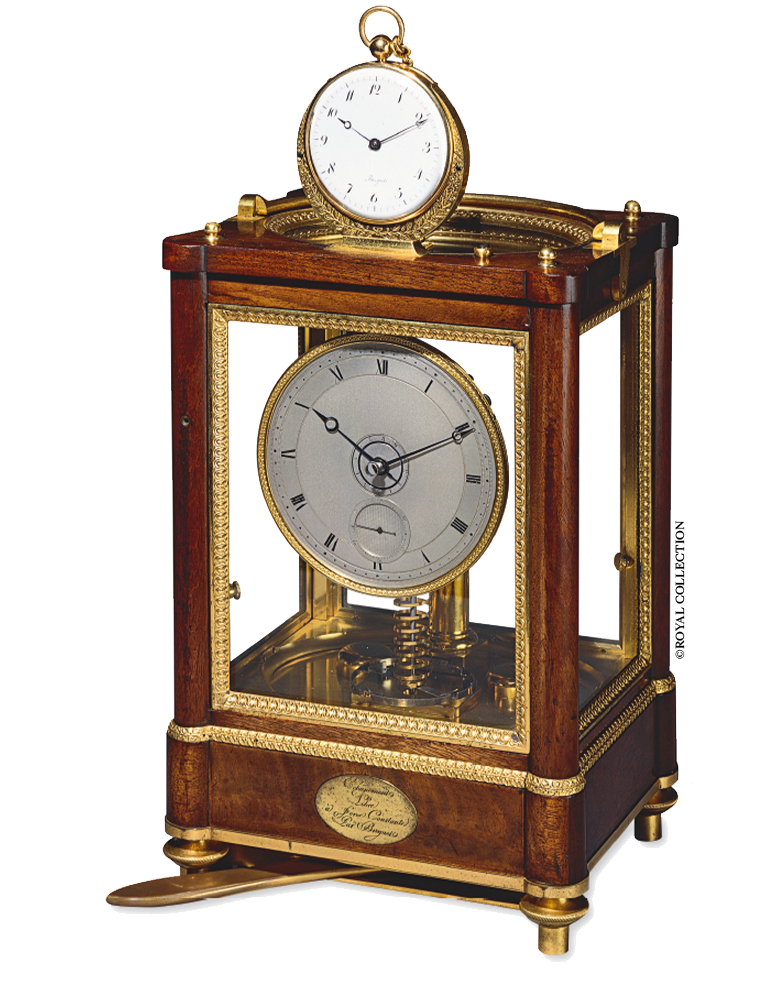Presentation of the first “sympathique clock”
The system consists of a clock and a watch. When the watch is placed in the cradle of the clock, it is automatically reset and adjusted.

Conceived by Breguet in 1795 and presented to the public for the first time at the national exhibition of 1798, the sympathique clock was a system comprising a clock and watch. The clock was designed to hold the watch which, when placed in a recess, was automatically adjusted and reset. The term ‘sympathique’ was chosen by Breguet to express the notion of harmony and concord, ‘sympathy’ being used in its mystical sense to signify the universal principle that unites in harmonious accord the organs of the human body, the human race and the cosmos.
Although the sympathique clock enhanced Breguet’s fame, it remained complex and costly to make. Abraham-Louis sold only five examples, all different, before his death in 1823, and Antoine-Louis only one, in 1830.
All were bought by kings or princes.
Breguet synchronising (sympathique) clock No. 666 and its simple watch no. 721 sold in August 1814 to the British Prince Regent (the future King George IV of Great Britain). The Royal Collection